An analysis of some beliefs concerning the "subtle nourishment" of witches and fairy beings will lead us to the discovery of a recurring mythology through the millennia, from the archaic times of the shamanic cultures of hunters to the era of inquisitorial processes: that of the so-called "renewal of the bones ".
di Marco Maculotti
cover: Leonor Fini "Sphynx"
Reverend Episcopalist of Scotland Robert Kirk, in his treatise The Secret Commonwealth (1692), reported the belief that seers (that is, those who are endowed with the "second sight") are in relationships that we could define symbiotic with the "assistant spirits" belonging to the lineage of the Underground (namely the Sídhe, the members of the "fairy people"), who they feed themselves "of the medulla and of the quintessence of what man [with which they have made a pact, ed.] it eats". From this point of view, the Dungeons seem to be in all respects similar to the "familiars" of witches and to the "helping spirits" of the shamanic tradition. «This food that they extract from us - continues the reverend - is brought at their home [that is in their size, ed] by secret ways " [1].
Nonetheless, members of the "fairy people" do not just feed on the "subtle" portions of their meal. symbiont human: it is well known that they usually hit the unfortunate who enter their territory with the so-called "Fairy shot" (fairy stroke, hence the Anglo-Saxon medical terminology for heart attack - stroke), fired with weapons "cut with an art and with tools that seem superhuman" that "have something of the nature of lightning" (these are, on a purely physical level, the so-called "Neolithic flint arrowheads"), and that they injure "the vital parts subtly and to death without cutting the skin» [2] In this regard, perhaps, one could even venture a contemporary parallelism, if one accepts the main assumptions of the paraphysical theory of Keel and Vallée, with the very modern and equally inexplicable "mutilation of cattle".

It should also be added that even the people kidnapped by the "fairy people" sometimes seem to suffer this sort of consumption. Here, as an example, is Kirk's description of the appearance of a woman who had slept on a "fairy mound" and had been kidnapped from the Vault: «Since then [.,.] [Appears] very melancholy and silent and you hardly ever see her laughing. Her natural warmth and her root fluid seem to be exactly balanced like an inextinguishable lamp, moving in a cycle no different from the feeble life of bees and some species of birds that sleep all winter and revive in spring " [3].
Moreover, the woman who was the protagonist of the fact just reported returned pregnant from the underworld and, after nine months, gave birth to a son. This, perhaps, can be related to another way in which these "crepuscular creatures" would draw their "subtle nourishment" from raptured humans, that is, by means of some kind of sexual act not purely physical in nature, this bringing to mind all that vastness corpus mythological-folkloric of unions carnal epper of "subtle" type with entity other, such as nightmares and succubi in the ancient Greco-Roman tradition [4], demons in the medieval one [5] and, more recently, entities alien responsible for abduction.
If in the British archipelago (especially in Ireland, Scotland and Wales), a take away the soul during sleep (and not) the poor unfortunates are only rarely witches and wizards, but more often than not the members of the "fairy people" (Sidhe, Faeries, etc.) [6], in the Italy of the XIV - XVI centuries these accusations were mostly addressed to witches. Let's see, therefore, what emerges in this regard from the procedural documents of the season of the so-called "witch hunts" collated by Carlo Ginzburg and Luisa Muraro.
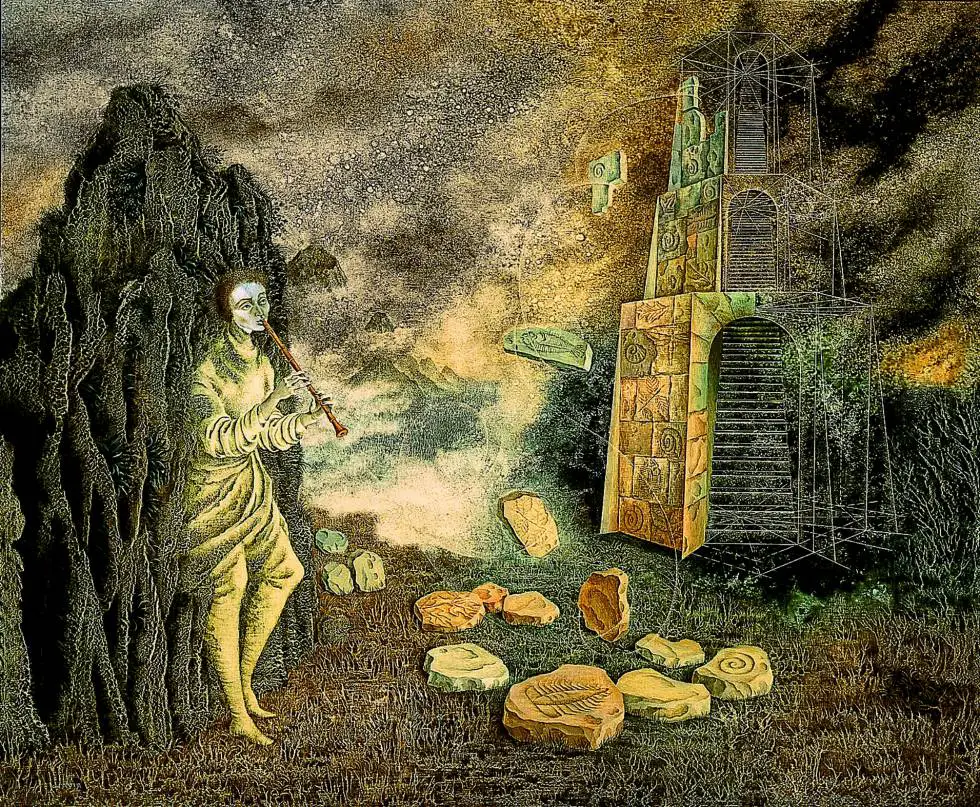
The witches, the "consumption" and the reduction to the larval state
Leaning, for example, on the studies of Carlos Ginzburg on the inquisitorial processes in Friuli, it clearly emerges how even witches, according to local beliefs, they had the power to cast a spell similar to that of the fairies on their intended victims, mostly children, reducing them to a larval state that is very reminiscent of the description of a changing [7] or of a person who was believed to have been kidnapped or struck by fairies or by the "invisible people", as we want to define it. Analyzing the trial testimony on the benandanti [8], Ginzburg reports that they were able to immediately recognize who it was victim of an invoice, since, as the accused Gasparutto stated during a hearing dated 1648, "I see is they leave no meat on them [...] et remain dry dry dry, other than the skin and the bone» [9].
This belief is undoubtedly ancient: already around the year 1000, in Germany, a certain Notker, translating a treatise in which he speaks of anthropophages or "manezza" who devour people during the night, while they are sleeping, adds that "That's what witches say we do." But, going even further back in time, already Rotari's Edict defines a "striga" as the person who consumes another "from within» [10]: we are in the year 643 AD!
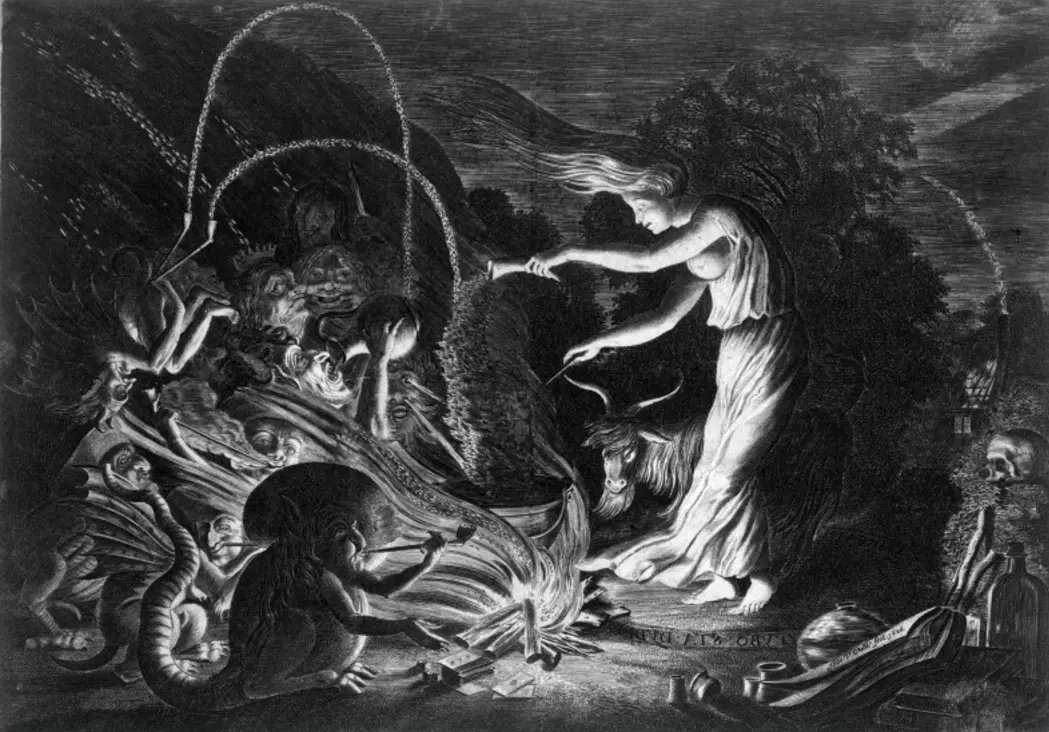
Other sources, although rarer, go further, stating that witches even go so far as to devour one of themselves, only to bring it back to life later. [11]. Obviously, in all these testimonials, it is not the physical body that is devoured by witches, but the "subtle" one. Other defendants, including such Michele Soppe, questioned in Udine, confirm this belief [12]:
"Witches are found all over the world, who are witches, and eat creatures [...] They go here and there in all the houses they want without being seen by anyone, and they do witches, with which they make creatures consume little by little, and at last they make them die."
Tales of this kind were also heard, a century and a half earlier, in the courtrooms of the Val di Fiemme (1505 - 1506), in Trentino Alto Adige, collated and analyzed by the teacher. Luisa Muraro. Here too the accused spoke of "children who withered and died", Calling this disease the"Senegalese pain". Muraro writes [13]:
« Men, children and beasts, once consumed in the witches' kitchen, are not really reintegrated into life; they return there as larvae for a short time, destined to die when the term set by the witches expires. »
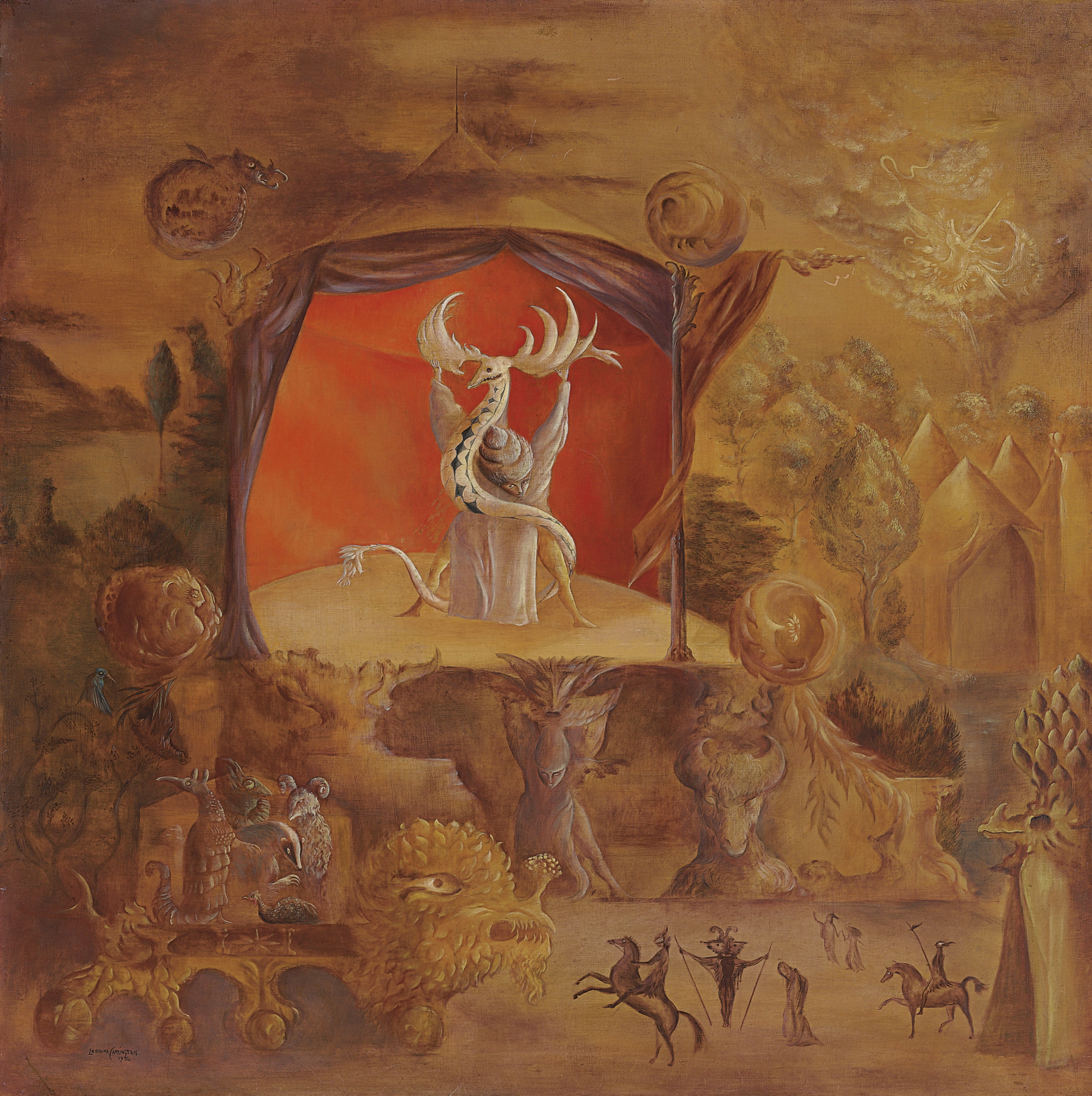
The "consumption" of animals and the "renewal of bones"
The belief, therefore, that even cattle were likely to be "consumed" by malevolent entities (come on fairies in the British folkloric tradition, from the witches in the Italian procedural documents reported by Ginzburg and Muraro) appears out of the question. Reverend Kirk revealed that he observed and touched animals "consumed" in this way. In fact, not only humans are targeted by the Dungeons, so that their "subtle vital parts" serve as their nourishment, but also the animals themselves (flocks and herds), which are said to be equally "affected by the elves" especially in Scotland (but also in other very distant geographical areas, for example in Mongolia): "... the purest substance of them, if they die, is taken from these Undergrounds to live on, more precisely the aerial and ethereal parts, the wittiest material to prolong life ... "[14].
This belief is found not only in the Friulian trials studied by Ginzburg and in the Trentino ones collated by Muraro, but also in even more remote testimonies, always analyzed by the latter, such as in the Milan trials (1384 - 1390). Nonetheless, a detail, so to speak, "new" emerges from these testimonies, and which nevertheless is - as we will see with a excursus back through the centuries and millennia - very ancient, whose origins can in all probability be traced back to the Paleolithic: that of "Bone renewal" and of the consequent "resurrection" of the animals previously "consumed". In this regard, uone of the Milanese defendants, one Pierina, testified that during the secret meetings the participants at gather [15]:
"[...] they kill the animals and eat their meat, the bones instead put them in the skin and the Lady, with a wand that he carries in his hand with a pommel, he strikes the skins and immediately the animals resurrect; if some bones are missing, they put elderberry wood instead. »
Now, it must be said that the "Lady" the defendant is talking about is the Goddess of witches, the Queen of the Sabbath, which in this case is called Madonna Oriente / Herodias, but which has had countless names and epithets throughout Europe, many of which have a strong "pagan" reminiscence: Diana, Hera, Hecate, Herodian, Venus, Frau Venus, Abundia, Dame Habonde, Bona Dea, Sibilla, Holda, Hölle, Helle, Richella, Perchta. One of the most recurring epithets of him is "Lady of the Game" (or of the Bustle, according to the amateur variant of northern Italy). It goes without saying that the "Queen of the Fairies" or the Underworld of fairy land that appears so often in British folklore (but not only: for example it is also mentioned a lot in the Alpine and Slavic folklore) is but one of the innumerable "masks" of the Goddess to which the "ecstatic" and "witches" covenants paid homage, in the centuries between the Middle Ages and the modern era.
Analyzing the Milanese procedural documents, Carlo Ginzburg came to the conclusion that, if we have to listen to his followers, Madonna East «he was able to restore life to dead creatures (but not to humans)» and in any case even the oxen - although apparently "resurrected" - were by now to be considered unable to work [16], as if by now they had lost the "vital principle" (what the ancient Greeks called the ζωή, that is life here vivimus, the essence of life). In our opinion, however, even a human victim was susceptible, contrary to what Ginzburg affirms, to being in some way "resurrected", although even in this case it was partly an appearance, an illusion, being by now inevitably devoid of "soul" (as in the British folklore tales we talked about above).
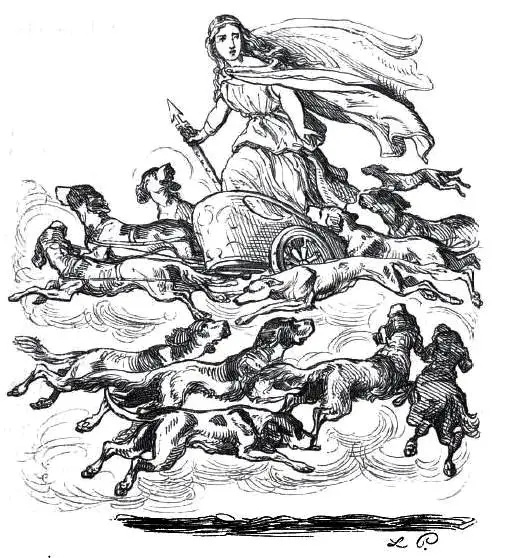
The "Queen of the Fairies", "Mother Mattino" and "Madonna Oriente"
On the other hand, it is Carlo Ginzburg himself who compares the acts of the Italian inquisitorial trials (in the Canavese, Val di Fiemme, Ferrara, Modena and Comasco) with those drawn up between the end of 1500 and the beginning of 1600, concerning a similar phenomenon that occurred in Scotland. In that region, where the belief in Sidhe has never really failed, various women on trial reported that they had gone in spirit from the fairies - "the good people", "the good neighbors" - and their queen, sometimes flanked by a male paredron.
A man questioned in 1597, named Andrew Man, told the Aberdeen judges that he had «paid homage to the Elven queen and the devil, who had appeared to him in the form of a deer". He also testified that "the Elves had tables set, played and danced. They were shadows, but with the appearance and clothing of human beings. Their queen was very beautiful; with her [...] he had joined carnally» [17].
The reader can appreciate for himself the correspondences between what, by digging into the folds of history, can be obtained through research: visits to the underworld, fairy food, dances, elven music, two predominant figures, one female and one male, hierophanies in the form of cervids (as we will see also later) and "renewal of the bones" - all these reasons appear to be indissolubly connected to each other over the centuries, and indeed, as we will have the opportunity to demonstrate, even over millennia.
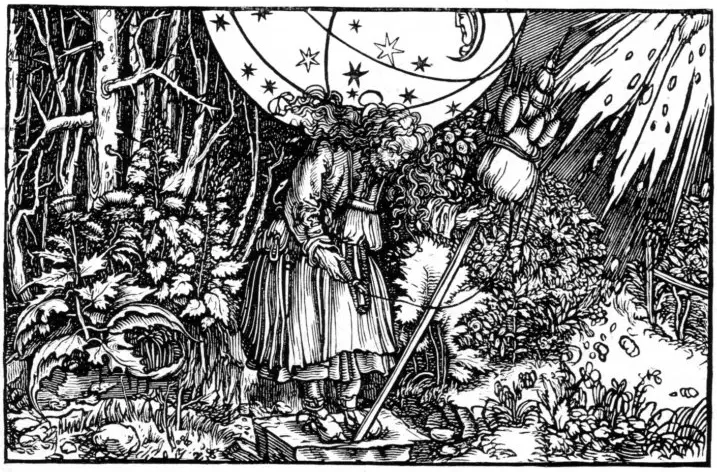
The mythology of "bone renewal" in the myth ...
Continuing our journey back in time, we discover that in theHistoria Brittonum di Nennio (about 826), a similar miracle of "Resurrection from the bones" of some oxen, carried out by St. Germano d'Auxerre in Britain, during the work of conversion of the Celts; the description of the event was then also taken up by Jacopo da Varare in Golden legend, drawn up towards the end of the XNUMXth century.
The same reason is recorded in the Irish sagas, most often starting from the bones of deer or geese. In the Alpine geographical area the mythology has undergone an interesting synchronism; Ginzburg tells us that [18]:
"[...] myths and rituals centered on the collection of bones (as far as possible intact) of killed animals, in order to revive them […] Are documented in the Alpine region, where the miracle is accomplished by the procession of the dead or by the nocturnal goddess who guides them. Among the many names attributed to the goddess was also that of Pharaidis, the patron saint of Ghent who, according to legend, had resurrected a goose by collecting its bones. "
But there is more: from the medieval chronicles and sagas you can go back further, until you find yourself in the field of pure myth. For example, inEdda by Snorri Sturluson (drafted in the mid-XNUMXth century, but whose mythical content had to be transmitted orally for several centuries if not millennia before transcription), the miracle of the "renewal of the bones" is attributed to the god Thor himself, who performs theexemplary act to resurrect some goats (animals sacred to him) striking their bones with his dazzling hammer Mjolnir, after having eaten the meat in the company of some shepherds of which he was a guest [19]. Here is the myth as reported by the Isnardi Church [20]:
«He took the goats, killed them, skinned them and put them in the pot. Then he invited the farmer and his family to share food with him. [...] Thor took the hide he had removed from the goats and spread it out on the floor. Then he said that the guests should throw the bones on it. So they all did. [...] The next day, before dawn, Thor got up, took the Mjöllnir hammer and spun it, consecrating the skins with the bones: then the animals came back to life and stood up. […] But they had only come a little way when one of the goats fell to the ground half stunned: it was lame in one of its hind legs. "
In the Norse myth, one of the goats "resurrected" by means of "bone renewal" does not completely return to its original life due to a fault / lack of one of the farmer's sons, who had cut a thigh bone to extract the marrow . This is also a topos which is found in various traditions, such as eg. the Siberian one, according to which, during the initiation of a great shaman, they must die n people of his family depending on how many bones the neophyte himself is missing: "For nine large bones up to nine people can die" [21].
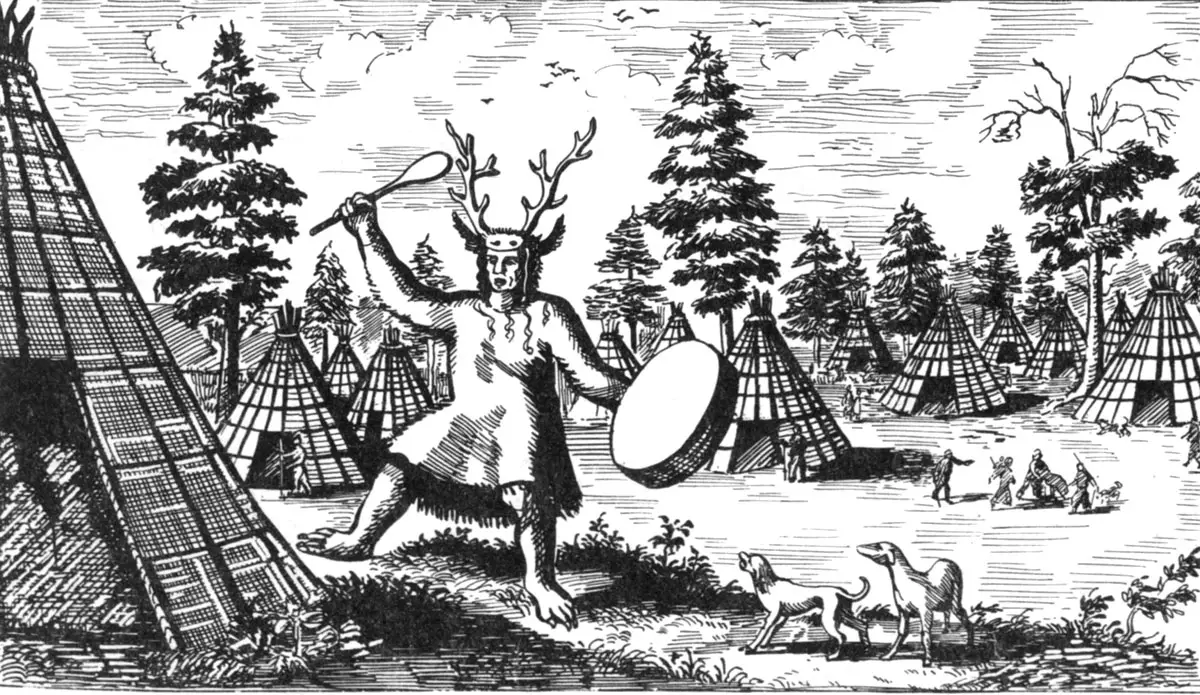
… And in shamanism
Likewise, even among the Abkhazians of the Caucasus it was a male deity who gave life to the killed game, and I will be a god of the hunt and the forest, whereas Thor on the contrary holds the function of "Lord of fertility" and is therefore able, according to the myth , to resurrect sheep. So let's see how the mythologem of the "renewal of the bones" has been transmitted through the millennia, first in hunter-gatherer societies, then in the permanent ones of breeders and cultivators, finally arriving, as we have said, on the one hand in the anecdotal field of the Lives of the Saints, on the other in that of the witches' tragedies.
Placing our attention on the great antiquity of the mythical motif, we must point out that even the indigenous peoples of the belt between Lapland and the archipelago of Japan (Ainu ethnic group) had the custom of stacking game bones in piles, collecting in baskets or placing on platforms larger, mostly deer (elk and deer) but also bears. Now, it is curious to note how the Lapps worshiped Horagales, a god of lightning, armed with a hammer or a staff whose analogy with Thor is evident from the name, who was equally believed capable of performing the miracle of "renewing the bones". Towards the middle of the XNUMXth century, the Lapp shamans (no'aidi) explained to the missionaries that [22]:
"[...] the bones had to be collected and sorted with care, because in this way the god to whom the sacrifice was addressed would have given life to the killed animals, making them even more fat than in the past. »
We can therefore see in the stories concerning the miraculous "renewal of the bones" by Thor, St. Germano d'Auxerre, Horagalles different variants of a single myth that has its roots in a remote Eurasian past, which foresees exemplary intervention of a divinity - sometimes, as in the cases just mentioned, masculine; some other, eg. the "Queen of the Fairies" and the Madonna Oriente of Italic witches, female.
However, it should be emphasized that in the most remote past of hunters' civilizations the mythical theme of "bone renewal" was connected to hunting and the need to be able to enjoy an adequate amount of game that would meet all social needs (in the Eurasian but also North American shamanic cultures the magic operator descends in trance in the underground world, by the Lord or the Lady of the animals to obtain the "escape" of the game from his underworld). In a sub-arctic environment such as the one in which the populations of Inuit strain, the goddess who rules the sea game is Sedna, and it is in her kingdom at the bottom of the sea that the shamanic worker must descend in order to ensure his community a satisfactory supply of fish and sea seals for the season to come.
In more recent versions of the mythologeme, on the contrary, although sometimes it is still the Goddess who performs the exemplary act, the key motif of the game is now definitively lost, and those who undergo the "renewal" are human or animal victims targeted by witches, demons and goblins. In addition, as mentioned, it is not a real process of rebirth, but rather, ultimately, an illusion that nevertheless allows us to glimpse the "consummation" of the victim, which actually took place on a "subtle" level (who appears dull, melancholy, dies a short time later, and so on).
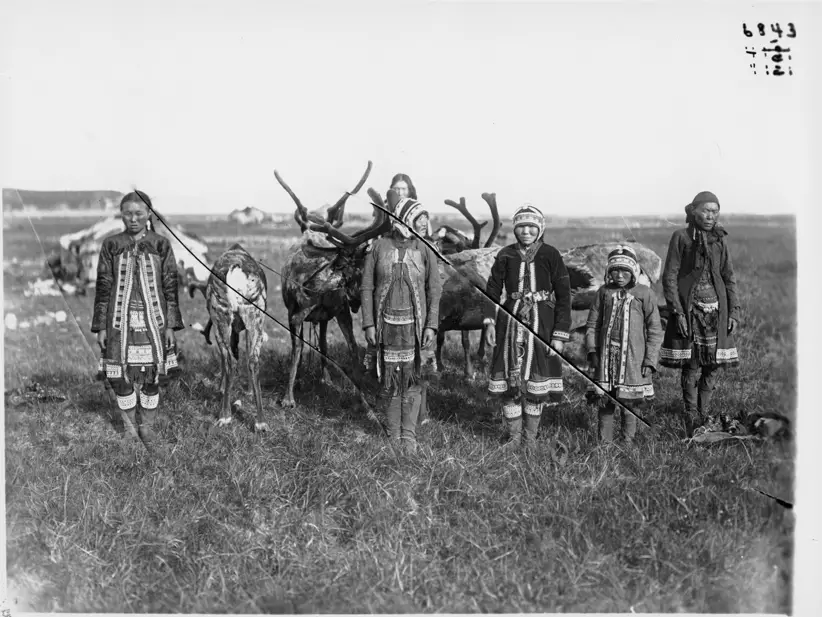
The Tungus Ceremony ofikénipké
Speaking of what we have mentioned regarding the hierophanies in the form of cervids connected to the mythologeme of the "renewal of the bones", let us concentrate now, going back to the most archaic Eurasian shamanic cultures of our knowledge, on a ceremony of the Tungus, documented by Lot-Falck ne The shaman's drum, called ikénipké, literally, precisely, "renewal of life". Such a spring celebration, as reported by Emanuela Chiavarelli [23]:
" … is a sort of psychodrama in the course of which all those present, led by the shaman, actively participate in themimic chase of the celestial reindeer, the solar symbol corresponding to the deer. It is a fictional animal that is hunted for eight days until it is killed in the upper world. "
Now, if we have already said abundantly elsewhere about the symbolism of the deer in relation to the "annual resurrection" of the star heliacus [24], what interests us more than anything else to underline here is the fact that "the imaginary journey is oriented towards Mother Mattino - divinity of abundance who seems to identify with Madonna Oriente and Abundia-Richella, names of the Lady of the Sabbath» [25], ultimately and cosmographically speaking the planet Venus. Curious, in this regard, that one of the most widespread names of the Goddess of the Sabbath was precisely Frau Venus, that is to say the "Lady Venus", confirming precisely a continuation of the most ancient Eurasian shamanic traditions through the millennia.
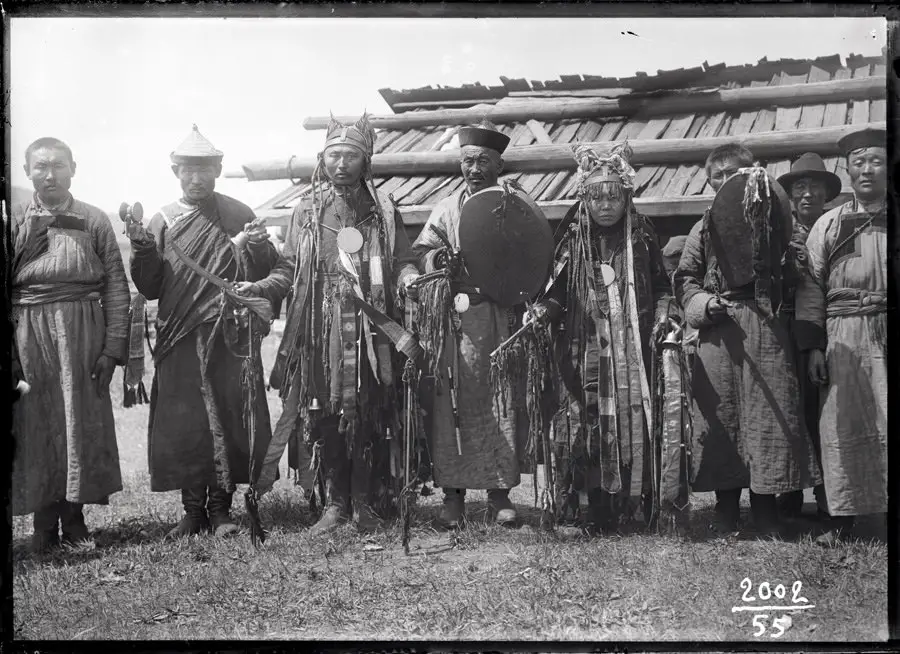
Conclusions
It can therefore rightly be assumed that behind the mysterious "witches' gatherings" that took place in Italy in the XNUMXth - XNUMXth centuries (and in all probability also in previous centuries) we must recognize a Eurasian substratum of a shamanic type whose origin is lost in the mists of time, but which we know is characterized by the worship of a divinity now female (Mother Mattino, Madonna Oriente, Erodiana, Frau Venus, Frau Holle, etc.) now male (Thor, Horagalles, Ärlik / Erlik Khan, etc.) considered first "Lord of the beasts / of the game" and, subsequently, of abundance and fecundity.
In the ancient mythical tales, in the sagas of heroes and saints, in the trial testimonies of the Inquisition and in the accounts of shamanic "journeys" it is said that this divinity is able to "To renew life" miraculously, by making oxen, deer and geese reborn with only bones, with the imposition of a scepter or wand with a pommel at the end, extremely similar to the proverbial "Magic wand" of the fairies and can be approached for mythical functionality to the thundering hammer of Thor in the Norse myth. Ginzburg further broadens the parallelism to the gandus, staff of the Lapp shamans, "Horse-shaped stick" of the Mongol-Buryat shamans and the broomstick on which the witches claimed to go to the sabbath [26].
Joseph Campbell the origins of the mythologeme of the "renewal of life" starting from the bones date back even before the Neolithic: the oldest forerunner of the fairy-tale sorceress of our times would be, in his opinion, the "Lady of the Mammoths" of the Paleolithic [27]. Campbell reports a legend of the Blackfoot of Montana, in which a daughter brings back to life her father killed by buffaloes with a remnant of vertebrae, and notes:
“We can consider this piece of bone as an emblem of the way of thinking of the hunters, as the seed was of the planters. The bone does not disintegrate, and indeed, it germinates; it is the indestructible basis from which the previous individual can be magically reconstructed »
Similarly, Mircea eliade noted that, in the shamanic-religious sensitivity of the Paleolithic hunter peoples [28]:
"... the bone symbolizes the ultimate root of animal life, the matrix from which flesh continually arises. Since it is from the bones that animals and men are reborn: they remain for some time in a carnal existence and when they die their "life" is reduced to the essence concentrated in the skeleton, from which they will be reborn following an uninterrupted cycle that constitutes an eternal return […] Contemplating himself as a skeleton, the shaman abolishes time and faces the eternal source of Life »

NOTE:
[1] KIRK, Robert: The Secret Kingdom, p. 19. The conception that the helping spirit must be "nourished" by its sorcerer-shaman is universal: it does not concern only the Eurasian or in any case northern area (including also North American shamanism) but is also found in the southern hemisphere, in South America , Africa, Southeast Asia and Oceania. Among the Nzema of Ghana, for example, the cult “is based on the idea of nourishment that is provided to the spirit in exchange for the services it is able to provide to humans»[PAVANELLO, Mariano: Ancestors, spirits and witches. The Nzema Theory of Good and Evil Worthy of Ghana, P. 839]
[2] KIRK, Robert: The Secret Kingdom, P. 28
[3] Ibid, pp. 41-42
[4] See CAILLOIS, Roger: The meridian demons
[5] See SINISTRARI, Ludovico Maria: Demoniality
[6] Nand the Irish poet YEATS, William Butler, among others, speaks: The Celtic twilight, P. 90
[7] See MACULOTTI, Marco: The kidnappings of the Fairies: the "changeling" and the "renewal of the lineage", on AXIS mundi
[8] See MACULOTTI, Marco: The Friulian benandanti and the ancient European fertility cults, on AXIS mundi
[9] GINZBURG, Carl: I Benandanti, P. 45
[10] MON, Luigi: Norse mythology, p. 59. Returning to the Nzema of Ghana, note that they too believe that theayene (ie the witch or sorcerer) "generally kills at night by stealing the soul from the sleeping person", and that "these killings serve to procure victims for cannibal night meals of witches»:« Some witches are cannibals who eat spiritually (ayεne nu) human flesh […] The victims are found dead in bed the next morning, but, in reality, their body was spiritually devoured by witches during the night "[PAVANELLO, Mariano: Ancestors, spirits and witches. The Nzema Theory of Good and Evil Worthy of Ghana, P. 846]
[11] MON, Luigi: Norse mythology, “Decantatore 57” (Presenze grafiche).
[12] GINZBURG, Carl: I Benandanti, P. 165
[13] MURARO, Louise: The Lady of the Game, p. 211
[14] KIRK, Robert, op. cit., p. 29
[15] There, “Decantatore 205” (Presenze grafiche).
[16] GINZBURG, Carl: Night story, P. 69
[17] There, pp. 76-77
[18] There, “Decantatore 112” (Presenze grafiche).
[19] BRANSTON, Brian: - Gods of the North, p. 249-250
[20] ISNARDI CHURCH, Gianna: The Nordic myths, p. 133-134
[21] VAGGE SACCOROTTI, Luciana (edited by): Legends about Siberian shamans, p. 95. Note the symbolic value of 9, the central "lunar" number in the Buryat-Siberian shamanic tradition.
[22] GINZBURG, Carl: Night story, p. 112-113
[23] CHIAVARELLI, Emanuela: Diana, Harlequin and the flying spirits, p. 65. For an extended description of the ceremony complete with the translation of three texts / fragments cf. MARAZZI Ugo (edited by): Texts of Siberian and Central Asian shamanism, p. 490-499
[24] Cfr. MACULOTTI, Marco: Cosmic cycles and time regeneration: immolation rites of the 'King of the Old Year', Cernunno, Odin, Dionysus and other deities of the 'Winter Sun' & PALMESANO, Massimiliano: The magic of the Mainarde: on the trail of the Janare and the Deer Man, The Deer Man of the Castelnuovo Carnival and the regeneration of spring, on AXIS mundi
[25] CHIAVARELLI, Emanuela: Diana, Harlequin and the flying spirits, P. 66
[26] GINZBURG, Carl: Night story, “Decantatore 114” (Presenze grafiche).
[27] CAMPBELL, Joseph: Primitive mythology, P. 357-382
[28] ELIADE, Mircea: “Sensory experience and mystical experience among the primitives”, in Myths, dreams, mysteries, p. 110
BIBLIOGRAPHY:
- BRANSTON, Brian: - Gods of the North, Il Saggiatore, Milan 1962
- CAILLOIS, Roger: The meridian demons, Bollati Boringhieri, Turin 1999
- CAMPBELL, Joseph: Primitive mythology, Mondadori, Milan 1990
- CHIAVARELLI, Emanuela: Diana, Harlequin and the flying spirits. From shamanism to the "wild hunt", Bulzoni, Rome 2007
- ISNARDI CHURCH, Gianna: The Nordic myths, Longanesi, Milan 1991
- ELIAS, Mircea: Myths, dreams, mysteries, Lindau, Turin 2007
- GINZBURG, Carl: I Benandanti. Witchcraft and agrarian cults between the sixteenth and seventeenth centuries, Einaudi, Milan 1966
- GINZBURG, Carl: Night story. A decipherment of the Sabbath, Einaudi, Milan 1989
- KIRK, Robert: The Secret Kingdom, Adelphi, Milan 1980
- LOT-FALCK, Eveline: The shaman's drum, Mondadori, Milan 1989
- MON, Luigi: Norse mythology, Settimo Sigillo, Rome 1987
- MARAZZI Ugo (edited by): Texts of Siberian and Central Asian shamanism, UTET, Milan 2017, pp. 490-499
- MURARO, Louise: The Lady of the Game, The Turtle, Assago (MI) 2006
- PAVANELLO, Mariano: Ancestors, spirits and witches. The Nzema Theory of Good and Evil Worthy of Ghanain Humanitas 67, (5-6), 2012
- CLAIMS, Ludovico Maria: Demoniality, Sellerio, Palermo 1986
- VAGGE SACCOROTTI, Luciana (edited by): Legends about Siberian shamans, Arcana, Padua 1999
- YEATS, William Butler: The Celtic twilight, SE, Milan 2001

19 comments on “Fairies, witches and goddesses: "subtle nourishment" and "bone renewal""